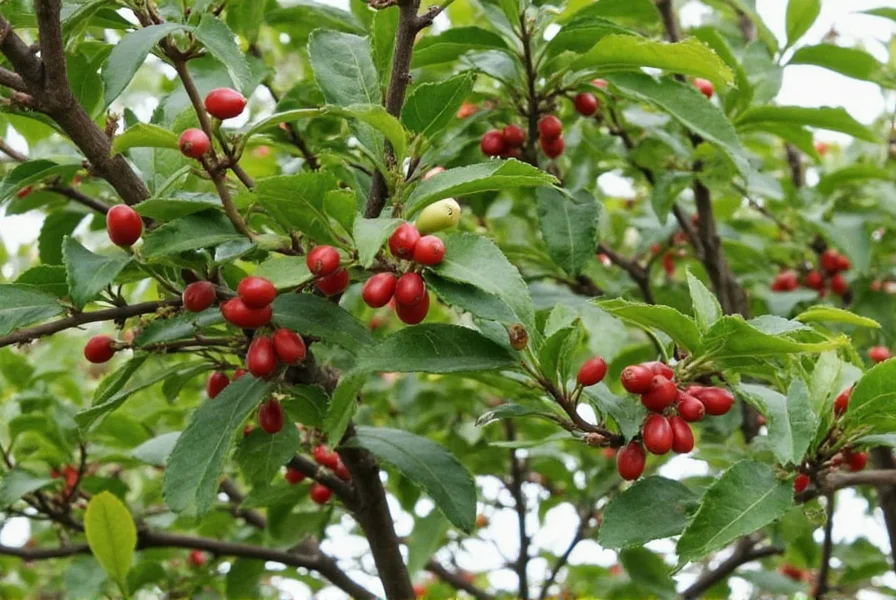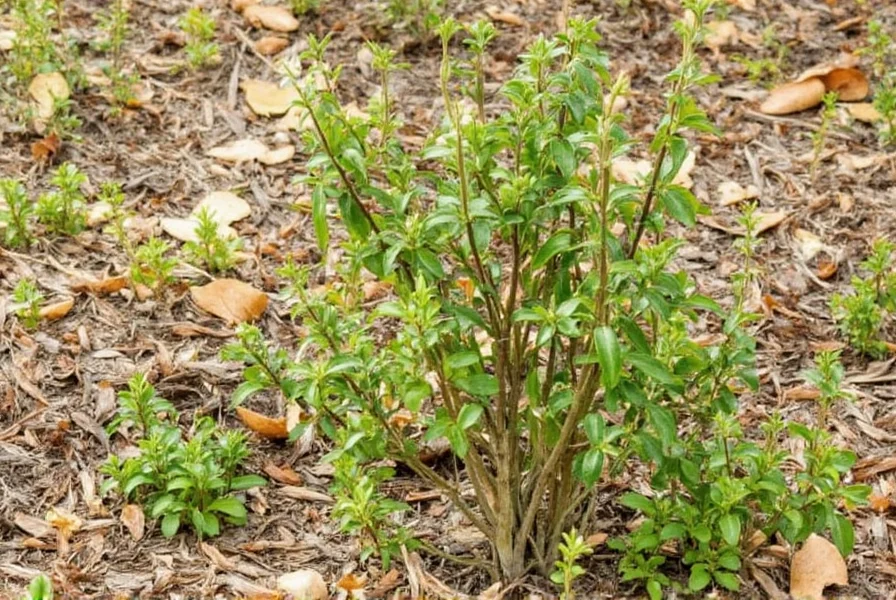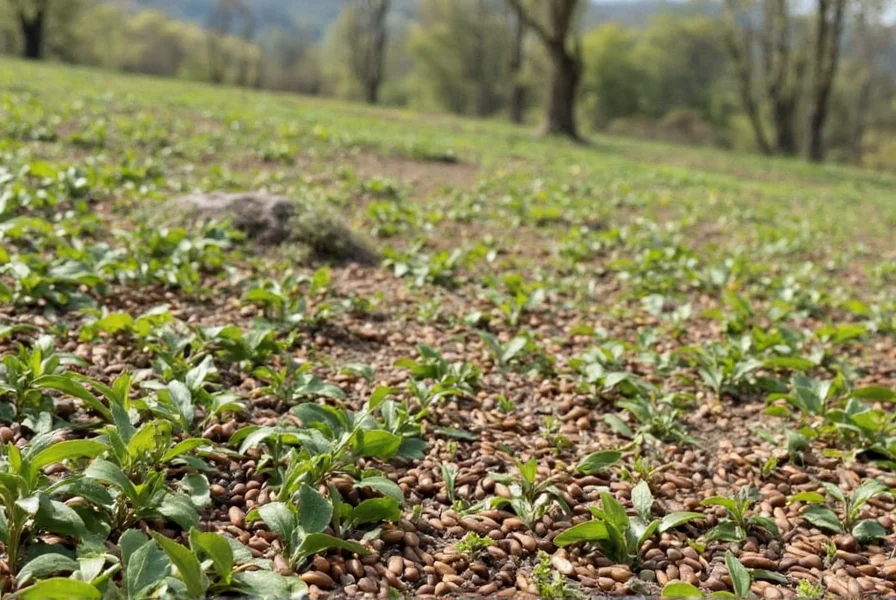Understanding the intricacies of clove cultivation reveals why this valuable spice remains a specialized agricultural pursuit. Clove trees take approximately 6-8 years to reach full production capacity, making long-term planning essential for anyone considering how to start a clove farm. The trees grow best in areas with consistent rainfall patterns of 1,500-2,500 mm annually, distributed evenly throughout the year, though they can tolerate short dry periods.
Botanical Characteristics of Clove Trees
Syzygium aromaticum, the scientific name for the clove tree, belongs to the Myrtaceae family. These evergreen trees typically reach heights of 8-12 meters when mature, though proper pruning can maintain them at more manageable 5-6 meter heights for easier harvesting. The distinctive nail-shaped flower buds that we know as cloves start as pale flowers that gradually turn green, then transition to bright red as they mature—the optimal stage for harvesting.

Essential Growing Conditions for Successful Clove Farming
For those exploring clove farming requirements, temperature stability proves critical. Clove trees thrive in consistent temperatures between 22°C and 30°C (72°F-86°F) with minimal fluctuations. They cannot tolerate frost or prolonged exposure to temperatures below 15°C (59°F). The best climate for clove trees features high humidity levels of 70-90% and protection from strong winds, which can damage the delicate branches.
| Soil Requirement | Optimal Range | Notes |
|---|---|---|
| pH Level | 5.5-6.5 | Slightly acidic conditions promote nutrient absorption |
| Organic Matter | Minimum 3% | Enhances water retention in volcanic soils |
| Drainage | Excellent | Clove roots cannot tolerate waterlogged conditions |
Step-by-Step Clove Cultivation Process
Establishing a productive clove farm requires careful attention to each growth stage. Farmers typically begin with seed selection from high-yielding mother trees, followed by germination in nursery beds. After 6-8 months, when seedlings reach 30-40 cm in height, they're transplanted to the main field with spacing of 8x8 meters to allow adequate sunlight penetration and air circulation.
The first flowers typically appear when trees are 4-5 years old, but full production doesn't commence until years 6-8. During this establishment phase, regular weeding, mulching, and organic fertilization support healthy growth. Many successful operations incorporate intercropping with banana or coconut trees during the early years to maximize land use while the clove trees mature.
Harvesting and Post-Harvest Processing Techniques
Precise timing defines effective clove harvesting techniques. Farmers must pick the buds when they've turned from green to bright red but before they open into flowers. This narrow window, typically lasting 2-3 weeks per tree, requires daily monitoring during harvest season. Hand-picking remains the standard practice to avoid damaging the delicate buds.
After harvest, the clove processing after harvest process begins immediately. The buds undergo sun-drying for 4-7 days until they turn dark brown and the stems become brittle. Properly dried cloves contain 15-20% moisture content and develop the characteristic aromatic compounds. Modern farms often use solar dryers or controlled environment drying to maintain consistent quality regardless of weather conditions.

Economic Considerations in Clove Farming
Evaluating the profitability of clove farming requires understanding both production costs and market dynamics. A mature clove tree (15+ years) typically yields 3-5 kg of dried cloves annually, with exceptional trees reaching up to 10 kg. At current market prices of $8-15 per kilogram for quality cloves, a well-managed hectare (approximately 150 trees) can generate $3,600-$11,250 annually.
However, farmers must account for significant upfront investment. Establishing a clove farm requires 6-8 years before meaningful harvests begin, during which time maintenance costs continue without revenue. Many successful operations diversify by producing clove oil (extracted from leaves and stems) during the establishment phase to generate interim income.
Challenges and Sustainable Solutions in Modern Clove Production
Clove farmers face several persistent challenges that impact yield and quality. The clove shoot borer (Hypsipyla robusta) remains the most destructive pest, while fungal diseases like powdery mildew can devastate crops during humid periods. Climate change introduces additional uncertainty, with shifting rainfall patterns affecting traditional growing regions.
Forward-thinking farms implement integrated pest management strategies and sustainable clove cultivation practices to address these issues. These include:
- Intercropping with nitrogen-fixing plants to improve soil health
- Using organic mulches to maintain soil moisture and temperature
- Implementing drip irrigation systems for water conservation
- Establishing windbreaks to protect young trees
- Practicing selective pruning to improve air circulation and reduce disease
Organic certification has become increasingly valuable in the spice market, with organic clove farming methods commanding premium prices. Certified organic cloves typically sell for 20-30% more than conventionally grown counterparts, making the transition economically viable for many farmers despite initially lower yields during the conversion period.
Global Clove Production Landscape
Indonesia dominates global clove production, accounting for approximately 75% of the world's supply, with the islands of Ambon and Ternate serving as primary growing regions. Tanzania follows as the second-largest producer, particularly on the islands of Zanzibar and Pemba, where clove farming has been central to the economy since the 19th century. Madagascar, Sri Lanka, and India complete the top five producing nations.
Understanding regional differences in clove tree growing conditions helps explain production variations. Indonesian cloves tend to have higher eugenol content (70-90%), giving them a more intense aroma, while Tanzanian cloves often feature higher caryophyllene levels, resulting in a spicier flavor profile. These subtle differences create distinct market segments for specialty food producers and essential oil manufacturers.
How long does it take for a clove tree to produce harvestable buds?
Clove trees typically begin producing harvestable buds 4-5 years after planting, but don't reach full production capacity until 6-8 years. Maximum yield is usually achieved when trees are 15-20 years old, with productive lifespans extending up to 80 years under proper management.
What are the most common challenges in clove farming?
The primary challenges include pest management (particularly the clove shoot borer), fungal diseases during humid periods, climate change impacts on traditional growing regions, and the long establishment period before first harvest. Many farmers also struggle with post-harvest processing to maintain quality during drying.
Can cloves be grown outside tropical regions?
Clove trees require strictly tropical conditions and cannot be commercially grown outside regions between 20°N and 20°S latitude. Attempts to grow cloves in temperate climates typically fail due to insufficient warmth, humidity, and the trees' intolerance of frost or temperatures below 15°C (59°F).
What makes Zanzibar cloves special compared to other regions?
Zanzibar cloves are renowned for their balanced flavor profile with moderate eugenol and higher caryophyllene content compared to Indonesian cloves. The island's volcanic soil and consistent maritime climate create ideal growing conditions that produce cloves with distinctive aromatic qualities highly valued by spice blenders and essential oil producers.
How do farmers determine the right time to harvest cloves?
Farmers harvest cloves when the buds transition from green to bright red but before they open into flowers. This narrow window requires daily monitoring during harvest season. The optimal stage shows buds with a slight curve at the tip and firm texture. Harvesting too early yields underdeveloped flavor, while waiting too long results in open flowers with diminished aromatic compounds.











 浙公网安备
33010002000092号
浙公网安备
33010002000092号 浙B2-20120091-4
浙B2-20120091-4